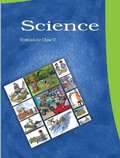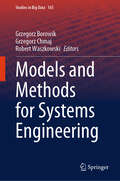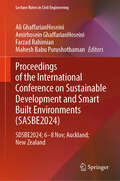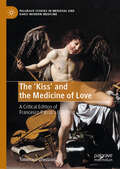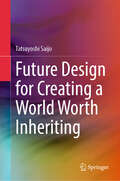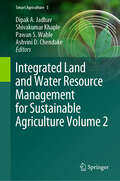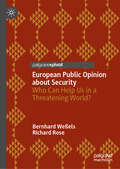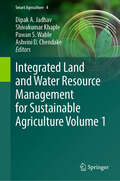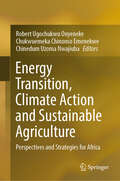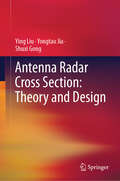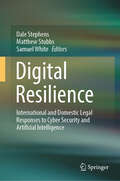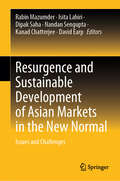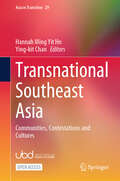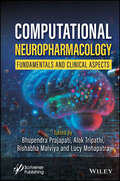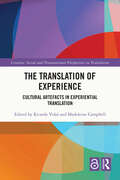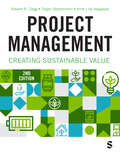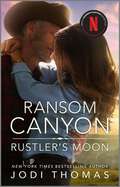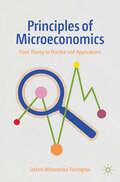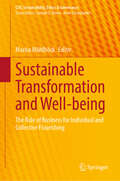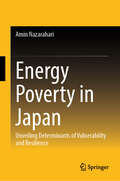- Table View
- List View
Science (English Medium) class 6 - Karnataka Board
by National Council of Educational Research and TrainingThe Science - Sixth Standard textbook by the Karnataka Textbook Society, developed under NCERT guidelines, is designed to connect classroom learning with students’ everyday experiences. Emphasizing inquiry-based and activity-driven education, the book encourages children to observe, question, experiment, and reflect on the natural world. The curriculum covers a wide range of topics from food sources and components, plant and animal life, materials and their properties, to physical phenomena like light, motion, electricity, and magnets. Chapters are structured to include hands-on activities, relatable examples, and reflective questions, fostering both conceptual understanding and curiosity. The textbook also integrates essential values such as environmental awareness, scientific temper, and social responsibility. It features child-friendly characters like Paheli and Boojho to engage learners in a conversational tone throughout. Developed collaboratively by experts and educators, the book aims to support holistic development and lay a strong foundation in science for young learners, aligning with the vision of the National Curriculum Framework (2005) to create a joyful and meaningful learning environment.
Models and Methods for Systems Engineering (Studies in Big Data #165)
by Grzegorz Borowik Grzegorz Chmaj Robert WaszkowskiThis book compiles high-quality research contributions from leading experts, providing both theoretical foundations and practical methodologies that are shaping the future of engineering systems. In an era where technological innovation drives every industry, this book offers a comprehensive exploration of cutting-edge approaches in systems optimization, artificial intelligence, and digital transformation. Divided into three distinct sections—Advanced Technologies in Control, Optimization, and Communication Systems; Artificial Intelligence, Machine Learning, and Cybersecurity; and Human-Computer Interaction, Digital Transformation, and Future Internet Technologies—this book covers a wide range of topics essential for today’s engineers and researchers. From the latest advancements in spacecraft orbit control and energy-efficient IoT data management to groundbreaking work in medical diagnostics using AI, the book delivers a diverse array of applications across industries. This book is an invaluable resource for scientists, engineers, IT specialists, and students seeking to understand the complexities and opportunities in modern systems engineering. Whether you are a researcher looking for state-of-the-art techniques or a professional seeking practical solutions for engineering challenges, this book is designed to equip you with the tools and knowledge to succeed in a rapidly evolving field. Discover how the latest models and methods in systems engineering are reshaping technology and driving innovation across industries. This essential guide is perfect for professionals in fields such as computational intelligence, control engineering, artificial intelligence, signal processing, and digital transformation. It also serves as a robust reference for academic researchers, and students involved in engineering and applied science disciplines.
Proceedings of the International Conference on Smart and Sustainable Built Environment: SASBE2024, 7-9 November, Auckland, New Zealand (Lecture Notes in Civil Engineering #591)
by Ali GhaffarianHoseini Amirhosein Ghaffarianhoseini Farzad Rahimian Mahesh Babu PurushothamanThis book presents peer reviewed articles from the International Conference of Sustainable Development and Smart Built Environments: SDSBE2024; held from 6-8Nov at Auckland, New Zealand. It encapsulates cutting-edge research in Sustainable Development and Smart Built Environments, featuring global scholars. Encompassing diverse themes, the book explores sustainable urban development, governance, and policy, emphasizing urban greening and climate resilience. It delves into innovative approaches for sustainable transport, intelligent infrastructure, and community well-being. The integration of Data Science, AI, and IoT for optimizing built environments is a focal point, alongside advancements in digital twins and OpenBIM. Social aspects, including equity and indigenous perspectives, are explored, along with health considerations in urban settings. The proceedings serve as a comprehensive resource, reflecting the multifaceted advancements driving sustainable and smart urban futures.
The ‘Kiss’ and the Medicine of Love: A Critical Edition of Francesco Patrizi’s Il Delfino (Palgrave Studies in Medieval and Early Modern Medicine)
by Tommaso GhezzaniThis is a revised critical edition of philosopher and scientist, Francesco Patrizi's manuscript, Il Delfino, overo del bacio (c.1555), with an English translation and commentary. Il Delfino, or ‘The Kiss’ survives in a single manuscript, compiled by an assistant and interspersed with autograph corrections by Patrizi himself. The only modern critical edition of the text, edited by Danilo Aguzzi Barbagli (1975), is known to contain many errors that prevent a correct understanding of the work. This book therefore fills this historiographical gap and at the same time provides a reliable text for further translations of Patrizi's work into other languages.
Future Design for Creating a World Worth Inheriting
by Tatsuyoshi SaijoOur world stands at a critical crossroads. While world leaders wage wars and pursue aggression, humanity faces mounting "future failures" - burdens we're leaving for generations yet unborn. Scientists warn that carbon emissions, nitrogen cycles, and biodiversity loss have already reached dangerous tipping points. Yet we possess what we call "futurability" - the capacity to find joy in creating happiness for future generations, even at the expense of immediate gains. However, our current society isn't structured to nurture this vital human trait. Drawing inspiration from the Iroquois' seventh-generation principle, we've developed and tested innovative social mechanisms through rigorous laboratory experiments and real-world applications. This book, "Future Design for Creating a World Worth Inheriting," presents our vision and practical framework for redesigning society to activate our collective futurability. Through years of research and implementation, we've created concrete solutions that can transform how we make decisions about our shared future. Join us in this crucial endeavor to create a world our descendants will thank us for - a world truly worth inheriting.
Integrated Land and Water Resource Management for Sustainable Agriculture Volume 2 (Smart Agriculture #5)
by Dipak A. Jadhav Shivakumar Khaple Pawan S. Wable Ashvini D. ChendakeThis book covers up-to-date research on various emerging technologies in agriculture and agricultural engineering with discussing the advancement and gap between different techniques. In this sense, this book features the application of the newly developed technologies for effective farm management and precise agriculture to improve the crop yield with maintaining the soil conditions. This book includes the application of allied engineering branches to agriculture including robotics, drone technology, remote sensing & GIS, computational modeling, ICT tools, sensing techniques, agricultural mechatronics, nano-biotechnology and applied mechanics, etc. Any upcoming early stage researchers and scientist working in this research domain get idea and knowledge about various aspects and dimensions of water resource engineering advancement and give directions to solve real field challenges for sustaining in future water demand.
European Public Opinion about Security: Who Can Help Us in a Threatening World? (Palgrave Studies in European Union Politics)
by Bernhard Weßels Richard RoseThis book&’s aim is to determine empirically whether Europeans see their multiple security needs best advanced by a consistent reliance on the EU&’s security policies or by differentiating allies according to their capacity to deal with different types of security threats, economic, military, and climate change. It uses original survey data to test whether people see their country facing multiple threats to their security. If they see a threat, do they want their national government to seek help from the EU, the United Nations or NATO or have their national government look after national security on its own? Given substantial differences in public opinion, we test whether this is due to individual differences in their political attitudes and social characteristics; national context; or differences in the capacity of multi-national institutions. The results have important implications for the public policies of national governments and the EU and for theories of European integration.
Integrated Land and Water Resource Management for Sustainable Agriculture Volume 1 (Smart Agriculture #4)
by Dipak A. Jadhav Shivakumar Khaple Pawan S. Wable Ashvini D. ChendakeThis book covers up-to-date research on various emerging technologies in agriculture and agricultural engineering with discussing the advancement and gap between different techniques. In this sense, this book features the application of the newly developed technologies for effective farm management and precise agriculture to improve the crop yield with maintaining the soil conditions. This book includes the application of allied engineering branches to agriculture including robotics, drone technology, remote sensing & GIS, computational modeling, ICT tools, sensing techniques, agricultural mechatronics, nano-biotechnology applied mechanics, etc. Any upcoming early stage researchers and scientist working in this research domain get idea and knowledge about various aspects and dimensions of water resource engineering advancement and give directions to solve real field challenges for sustaining in future water demand.
Energy Transition, Climate Action and Sustainable Agriculture: Perspectives and Strategies for Africa
by Robert Ugochukwu Onyeneke Chukwuemeka Chinonso Emenekwe Chinedum Uzoma NwajiubaThis book offers a comprehensive exploration of climate justice intertwined with energy transitions, specifically focusing on the unique challenges and opportunities in developing countries. It presents a series of in-depth studies and discussions across various dimensions such as legal frameworks, economic incentives, gender issues, and the socio-economic impacts of energy policies. By dissecting complex relationships like those between renewable energy consumption and employment in Nigeria as well as the impacts of financial development, official development assistance, institutional quality and foreign direct investment on energy transition in Africa, this book illuminates the multifaceted nature of sustainable development. Starting with an overarching introduction to the imperatives of climate justice and the necessity for energy transition, the book delves into detailed analyses including the challenges and opportunities in renewable energy, the impacts of fossil fuel dependency and reforms, and the critical role of legal and institutional frameworks in supporting just transitions. Subsequent chapters discuss the gender-specific impacts of energy policies, the potential of international partnerships, and the entrepreneurial ventures emerging within just energy markets. Further, the book addresses public engagement, the educational imperatives for climate and energy literacy, and the intricate links between climate-induced migration, conflicts, and energy policies. It also explores the economic frameworks that can facilitate a just transition, evaluates the role of carbon markets in climate justice, and assesses how energy transitions impact water and food security. The book concludes by synthesizing key findings and offering strategic recommendations for integrating climate justice into energy transition policies. This final chapter provides actionable insights for policymakers, stakeholders, and communities aimed at fostering sustainable and equitable energy solutions. Targeted at policymakers, academics, and professionals involved in energy and climate policy, as well as students and researchers, this book serves as an essential resource for anyone committed to advancing sustainable and just energy transitions in developing countries.
Antenna Radar Cross Section: Theory and Design
by Ying Liu Yongtao Jia Shuxi GongThis is the first book to focus specifically on antenna RCS reduction theory and design approaches. It covers both principles and engineering practice, and provides an in-depth study of a number of important topics, including fundamental theory, antenna and array analysis models, the rapid numerical computation method, and various low-RCS antenna design methods. The comprehensive and systematic discussion of practical issues in antenna RCS reduction makes it an ideal resource for readers interested in practical solutions to antenna stealth, particularly researchers, engineers and graduate students in the fields of microwave engineering, electrical and electronic engineering, and telecommunications engineering.
Human Brain and Artificial Intelligence: 4th International Workshop, HBAI 2024, Jeju Island, South Korea, August 3, 2024, Proceedings (Communications in Computer and Information Science #2438)
by Quanying Liu Youzhi Qu Haiyan Wu Yu Qi An Zeng Dan PanThis book constitutes the refereed proceedings of the 4th International Workshop on Human Brain and Artificial Intelligence, HBAI 2024, held in Jeju Island, South Korea, on August 3, 2024.The 24 full papers and 5 short papers included in this book were carefully reviewed andselected from 74 submissions. They were organized in topical sections as follows: AI for brain science; AI for brain technology; and brain-inspired AI.
Digital Resilience: International and Domestic Legal Responses to Cyber Security and Artificial Intelligence
by Dale Stephens Matthew Stubbs Samuel WhiteThis book arises from a cybersecurity conference at the University of Adelaide attended by a group of government and academic experts. It presents the possible responses Australia can take to deter and respond to cybersecurity threats. It also examines the legal responsibility for cyber security and artificial intelligence, asking who (if anyone) bears responsibility for the myriad legal issues that arise. This book presents an authoritative legal framework for understanding the liability and responsibility of actors involved in cyberspace and the use of artificial intelligence. Providing an overarching summary of cybersecurity and artificial intelligence threats, followed by detailed analysis of potential authorizations and limitations regulating policy and governance responses, this book canvases a wide spectrum of civil and criminal frameworks. It is comprehensive enough to be useful for a wide cross-section of the Australian society in a range of sectors: individual users, small businesses, tertiary institutions, large corporations, and government. It is also beneficial to military personnel in outlining the legal frameworks available in times of armed conflict.
Resurgence and Sustainable Development of Asian Markets in the New Normal: Issues and Challenges
by Rabin Mazumder Isita Lahiri Dipak Saha Nandan Sengupta Kanad Chatterjee David EarpThis book is a compilation of transferable insights relevant to the dynamics of the current Asian business sector. It is a tool to develop a deep insight and formulate an appropriate roadmap to align with the post-pandemic business trends in the Asian market. The book is also a reflection of how innovation and resilience are actively driving the current Asian businesses. The major trends that have been identified in Asian markets have been in the fields of technology application, innovations, change in the patterns of demands towards sustainable choices, value-chain re-engineering and a growing consciousness about ethical choices. The volume empowers readers to take actionable steps towards creating sustainable business solutions, while also providing the opportunity to explore evolving perspectives on Asian market during the current period of disruption and how it has impacted businesses. This book will enhance the competency of young start-up ventures, budding entrepreneurs from Asian and non-Asian markets, SMEs and mid-level practitioners to manage and drive their organizations towards future sustainability in ensuring the value driven eco-system. This book will also be a guiding principle for the academics to undertake research on Asian market towards development of new solutions and actional strategies in addition to existing solutions.
Transnational Southeast Asia: Communities, Contestations and Cultures (Asia in Transition #29)
by Hannah Ming Yit Ho Ying-Kit ChanThis open access book presents Southeast Asia as an interesting and conceptually meaningful site to interrogate the transnational paradigm. In featuring research from and across different nations in Southeast Asia, it asks in what ways Southeast Asia lends itself to nuanced applications of transnationalism, and what the wider cultural and collective implications of that might be. Instead of viewing the past and the present as oppositional concepts of time, a temporal continuum is applied to a time-space compression that is fundamental to the workings of the transnational paradigm in the region that we call Southeast Asia. The transnational paradigm, a conceptual tool encompassing various configurations of transnationalism across disciplines, becomes relevant for analysing global cultural flows, but not without due consideration of the nuances shaped by spatio-temporal trends. A paradigm shift in transnationalism from historical connections to contemporary connectivity is afforded by increased mobility and accelerated cultural flows, which have given rise to unprecedented economic productivity in the past century and digital connectivity in the new millennium – a shift that the chapters collectively explore. Relevant to advanced students and scholars across disciplines in the humanities and social sciences, focused on Southeast Asia, this book is a timely exploration that unpicks and unpacks this long-discussed aspect within Asian &‘area studies&’.
Computational Neuropharmacology: Fundamentals and Clinical Aspects
by Bhupendra Prajapati Alok Tripathi Rishabha Malviya Lucy MohapatraThe book gives comprehensive insights into the cutting-edge intersection of computational methods and neuropharmacology, making it an essential resource for understanding and advancing medication for neurological and psychiatric disorders. Computational Neuropharmacology is an in-depth exploration of the convergence of computational methods with neuropharmacology, a science concerned with understanding pharmacological effects on the nervous system. This volume explores the most recent breakthroughs and potential advances in computational neuropharmacology, providing an extensive overview of the computational tools that are transforming medication discovery and development for neurological and psychiatric illnesses. Fundamental principles of computational neuropharmacology, descriptions of molecular-level interactions and their consequences for modern neuropharmacology, and an introduction to theoretical neuroscience are highlighted throughout this resource. Additionally, this study addresses computational attitudes in counseling psychology to improve therapeutic procedures through data-driven insights. Computational psychiatry uses computational technologies to bridge the gap between the molecular basis and clinical symptoms of psychiatric diseases. This volume covers computational approaches to drug discovery in neurohumoral transmission and signal transduction, Parkinson’s disease, epilepsy, and Alzheimer’s disease, and the use of molecular docking and machine learning in drug development for neurological disorders. It also discusses the use of computational methods to uncover potential treatments for autism spectrum disorder, depression, and anxiety. Audience This book is a valuable resource for computer scientists, engineers, researchers, clinicians, and students, providing a detailed understanding of the computational tools that are changing the developing field of neuropharmacology, leading the future of medication discovery and development for neurological and psychiatric illnesses by combining modern computational approaches with neuropharmacological research.
Molecular Pathology: A Primer for Laboratory Scientists
by Andrew BlannComprehensive textbook on molecular pathology for newcomers to the field, covering history, analytics, types of cancers, and more Molecular Pathology delivers an in-depth outline of molecular pathology appropriate for the undergraduate, postgraduate, or early-stage career lab scientist, drawing from authoritative sources such as NICE, the World Health Organisation, the Office of National Statistics, clinical guidelines, research publications and the National Genomic Test Directory. The text contains numerous tables, diagrams, and photos in each chapter to help elucidate key concepts. The opening chapter provides a general introduction to the subject with a historical perspective of key findings that have led to our current view of molecular pathology. The introduction is followed by a look at the scope of chromosomal disease (such as Down’s syndrome) and genetic disease (such as sickle cell disease). Chapter two describes the numerous analytical tools required in molecular pathology, and how complex genetic data is interpreted – i.e., bioinformatics. The remaining three chapters review the molecular pathology of focused groups of disease, including solid tumor cancer, blood cancer, and metabolic and other genetic diseases. Each of these three chapters explains the role of molecular pathology in the etiology, diagnosis, and management of each particular condition. Sample topics explored in Molecular Pathology include: Generating DNA and RNA for analysis, amplification by PCR, and DNA sequencing through micro-arrays, libraries, and Next Generation SequencingChromosome structure, covering histones and the centromere, abnormal chromosome numbers, and errors within chromosomes such as translocations and deletionsMyelofibrosis, myelodysplasia, essential thrombocythemia, polycythaemia, leukemia, lymphoma, myeloma, and haemopoiesis and maturation arrestMolecular pathology of single organ/organ system disease, such as Huntington’s and cardiomyopathy, and multi-organ disease such as Barth syndrome Molecular Pathology serves as an excellent introduction to the subject for first to third year undergraduate students. Healthcare professionals and biomedical scientists and researchers will also find it valuable.
Routledge International Handbook of Visual Research Methods in Anthropology
by Rupert Cox Chris WrightRoutledge International Handbook of Visual Research Methods in Anthropology approaches the question of method through conceptualisations of the visual world as light, sight, images and technologies of imaging that can be analysed and described through a range of visual practices in the course of anthropological research.The aim of the book is to move beyond making a case for the importance of “the visual” via its notional arrangement as a subject and means of study in anthropology by showing how it is applied as a way of doing anthropological research through the explication of a series of examples. Employing an innovative structure for a handbook, each contribution is orientated around a single distinguishing concept and together the contributions addresses the following three issues: How to see through images by treating the visual as a form of knowledge made visible. A second group of entries is concerned with how to see through time by approaching the visual as a modality for representing duration and rendering legible what may no longer be available to vision. Finally, a third group of entries deals with the visual at a phenomenal level, as a medium that we see in.This handbook is a timely and useful resource for both students and researchers of anthropology at this time because the discipline's long-standing, theoretical and empirically rich practical engagements with visual methods provide valuable insights for the social sciences into current transmutations of “the visual” into “the multimodal”, the “non-representational” and “the sensory”. The importance of these areas as well as of digital research more generally makes visual methods ever more important for social scientists; hence, this handbook is also valuable for those studying general research methods courses and in related fields such as sociology, health studies and social work.
The Translation of Experience: Cultural Artefacts in Experiential Translation (Creative, Social and Transnational Perspectives on Translation)
by Ricarda Vidal Madeleine CampbellExperience is a multilayered, cumulative affair with transformation at its core. Its study, a necessary first step for its translation, requires an exploration of embodiment, the senses, and cultural and social environments.The second of two volumes, this book explores how artefacts, as outcomes of experience brought about by the “artistranslator” perform semiotic work. This semiotic work arises through the intervention of their makers but also through their viewers/audience, often through the latter’s direct participation in the artefacts’ creation, which we see as an open-ended process. Drawing on diverse examples from across the world, the chapters explore visual materiality, the digital world and the multisensory nature of artefacts such as monuments, festivals, theatre performances, artworks, rituals, the urban environment and human bodies—the embodied perception of which may draw holistically or variously on the haptic, olfactory, auditory, kinetic or kinaesthetic senses. Throughout the book, experiential translation is framed as a political endeavour that allows experience to be shared across linguistic, cultural, generational or gendered divides in the form of artefacts that facilitate transformation and the acquisition of knowledge.This book and its companion volume The Experience of Translation: Materiality and Play in Experiential Translation include an international range of contributions from graduate students and early career researchers (ECRs) to tenured academics in translation studies, comparative literature, performance arts, fine arts, media and cultural studies, as well as educators, artists and curators. It will be of particular interest to translators and arts practitioners, scholars and researchers in the transdisciplinary field of humanities.
Project Management: Creating Sustainable Value
by Stewart R Clegg Torgeir Skyttermoen Anne Live VaagaasarThe second edition of this comprehensive textbook has been fully revised and updated, streamlining chapters and ensuring accessibility. Sustainability is now at the core of this textbook, showing students how projects can achieve success and create value for all stakeholders, ensuring projects for people, planet and prosperity. Key features of this edition include: • Sustainability Development Goal icons throughout highlighting where topics related to sustainability are covered. • New and expanded coverage of agile approaches, remote working, digitalisation, artificial intelligence and Industry 4.0. • Over 100 case studies from across different industries and countries such as Spain, Denmark, Qatar, Kenya, South Africa, Australia and Brazil. With an array of pedagogical features and complemented by supplementary online resources, this textbook is essential reading for students and managers undertaking a project management course at either the undergraduate or postgraduate level.
Project Management: Creating Sustainable Value
by Stewart R Clegg Torgeir Skyttermoen Anne Live VaagaasarThe second edition of this comprehensive textbook has been fully revised and updated, streamlining chapters and ensuring accessibility. Sustainability is now at the core of this textbook, showing students how projects can achieve success and create value for all stakeholders, ensuring projects for people, planet and prosperity. Key features of this edition include: • Sustainability Development Goal icons throughout highlighting where topics related to sustainability are covered. • New and expanded coverage of agile approaches, remote working, digitalisation, artificial intelligence and Industry 4.0. • Over 100 case studies from across different industries and countries such as Spain, Denmark, Qatar, Kenya, South Africa, Australia and Brazil. With an array of pedagogical features and complemented by supplementary online resources, this textbook is essential reading for students and managers undertaking a project management course at either the undergraduate or postgraduate level.
Rustler's Moon: A Small Town Cowboy Romance (Ransom Canyon #2)
by Jodi ThomasThe Ransom Canyon series is now streaming on Netflix starring Josh Duhamel, Minka Kelly and James Brolin!On a dirt road marked by haunting secrets, three strangers caught at life's crossroads must decide what to sacrifice…and what they're each willing to risk for love.If there's any place that can convince Angela Harold to stop running, it's Ransom Canyon. And if there's any man who can reveal desires more deeply hidden than her every fear, it's Wilkes Wagner. Beneath the rancher's honorable exterior is something that just might keep her safe…or unwittingly put her in danger's path.With his dreams of leaving this small Texas town swallowed up by hard, dusty reality, all Wilkes has to show for his life is the Devil's Fork Ranch. Though not one to let false hope seduce him, he can't deny the quiet and cautious beauty who slips into his world and changes everything.Lauren Brigman finally has freedom at her fingertips. All she needs is Lucas Reyes's attention—a look, a touch, some sign that she's more to him than a girl he rescued one dangerous night. But now it's her turn to rescue someone, and the life-altering decision may cost her more than a chance with Lucas."When you read it, you'll feel like you've come home."--New York Times bestselling author Robyn Carr on The Little Teashop on Main Don't miss the rest of the Ransom Canyon Series! Book 0.5: Winter's Camp Book 1: Ransom Canyon Book 2: Rustler's Moon Book 3: Lone Heart Pass Book 4: Sunrise Crossing Book 5: Wild Horse Springs Book 6: Indigo Lake Book 6.5: A Christmas Affair Book 7: Mistletoe Miracles Book 8: Christmas in Winter Valley
Spenser Studies, volume 39 number 1 (2025)
by Spenser StudiesThis is volume 39 issue 1 of Spenser Studies. Spenser Studies is devoted to the study of Edmund Spenser as well as the poetry of Renaissance England. Contributions examine Spenser’s place in literary history, the social and religious contexts of his writing, and the philosophical and conceptual problems he grapples with in his art. The journal also features work on Renaissance literary culture, broadly conceived. Past issues have published studies ranging from the diction of Stephen Hawes to female authorship in Mary Wroth’s Urania to the influence of English Renaissance sonneteers on William Butler Yeats.
Principles of Microeconomics: From Theory to Practice and Applications
by Stefani Milovanska-FarringtonThis textbook offers a comprehensive overview of microeconomics, featuring teachable and applicable approaches to core concepts. It includes fresh examples and applications to help students understand and apply opportunity cost, choice theory, and more to their own world. Throughout the book, there are practice problems with step-by-step solutions that help students better understand the topics covered. Sections provide scenarios to help students analyze consumer choices as well as the decisions of firms. Readers will learn how to evaluate the impact of microeconomic policies and how to perform equilibrium analysis. The author publishes digital worksheets with questions based on recent news stories that readers can use as they work through the book: https://econstefani.substack.com/. The book, combined with these free materials, introduces new and fresh approaches to help students apply fundamental concepts to the world around them. The resulting book is a valuable learning tool that highlights microeconomic principles for a new generation of learners.
Sustainable Transformation and Well-being: The Role of Business for Individual and Collective Flourishing (CSR, Sustainability, Ethics & Governance)
by Marisa MühlböckIn an era of undeniable human impact on the planet, can business drive sustainable development and enhance well-being for all? This book explores the evolving concept of well-being through a transdisciplinary lens, bridging sustainability, business, and collective flourishing. It examines the business sector's transformative role in promoting well-being through sustainable practices. Featuring insights from diverse disciplines and cultures, the book provides case studies, strategies, and resources for entrepreneurs and managers to achieve well-being in work and life. With contributions from leading scientists, it maps the current landscape, identifies gaps, and sparks new research on linking individual, societal, and planetary well-being. A must-read for those seeking to understand how business can foster a sustainable, well-being-driven future.
Energy Poverty in Japan: Unveiling Determinants of Vulnerability and Resilience
by Amin NazarahariThis book stands as the first comprehensive exploration of the intricate issue of energy poverty in Japan. Unveiling a nuanced exploration, the book breaks new ground by focusing on a unique category of households vulnerable to energy poverty, a revelation grounded in meticulously gathered, up-to-date data. The book not only dissects the fundamental aspects of energy poverty in Japan in detail, providing a comprehensive review of Japanese studies on energy poverty, but also introduces an innovative methodology for assessing vulnerability at the grassroots level.What distinguishes this work is its timely examination of global events, such as the Russia–Ukraine conflict and the reverberations of the COVID-19 pandemic, and their profound impact on household vulnerability to energy poverty. As the first-of-its-kind analysis in a developed nation such as Japan, the book offers more than insights; it presents pioneering approaches to confront and mitigate energy poverty.Engaging and data-driven, this book serves as an indispensable guide for policymakers, scholars, and those attuned to the urgent need for universal energy access. Enter a world where knowledge meets action, as this book charts a course towards resilience and equitable energy solutions.
